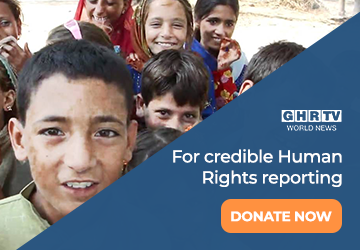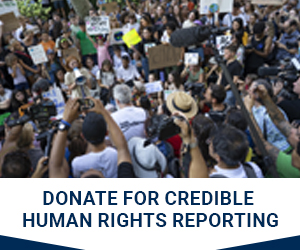Child marriages halts development and endangers the health of a child

13-02-2024
Pauliina Majasaari
Human Rights Researcher
Global Human Rights Defence
Sumeena, at the age of 15, in Nepal is heading to see her groom, Prakash of age 16.[i] She is being married as her family believes that she will bring blessing to the family by being married before her first menstruation. Little does she know; of the devastating effects the child marriage can have on her physical and mental health and - development.[ii]
Within the region of East Asia, multiple countries have a tradition of conducting child marriages. For example in Nepal, as mentioned the belief is in the fact that the child marriage brings blessings and safety to the family and to the, soon to be married, girls life. However, as it is a long-standing tradition and the individuals do not have knowledge of other ways, child marriages keep on taking place.[iii] Additionally, factors such as poverty, lack of education, and views of society add on to the acceptance of child marriages.[iv] Nepal has legislation in place which prohibits child marriages, however in practice it is not realized.[v]
Child marriages are violating multiple children’s rights simultaneously. The Convention on the Rights of the Child (CRC), ensures within Article 6 the inherent right to life, under Article 24 (3) the obligation of states’ to abolish traditional practices which are harmful to children’s health, Article 28 gives the right to education and Article 34 ensures that children should be protected from sexual abuse.[vi] Additionally, according to the Convention of the Elimination of all Forms of Discrimination Against Women (CEDAW) Article 16 (b) gives the right to freely choose their spouse and the freedom to enter into marriage based on free and full consent.[vii] A child cannot be considered to have the ability to give free consent on marriage, especially due to the societal norms and lack of education, resulting in the girls having little possibility to resist the upcoming marriage.[viii] Furthermore, the children are exposed to health problems as the young girls are expected to have sexual intercourse with their spouse and to get pregnant.[ix] A high likelihood of receiving HIV and other sexually transmitted diseases is present, with little to no access to health services, placing the young girls’ health at risk.[x] Additionally, becoming pregnant at such a young age increases the risk of complications within pregnancy and birth, in the worst case leading to the death of the mother.[xi] An unfortunate result of child marriages is dropping out of school, as the girls must start living family life and therefore, it is seen that there is no need nor time for education.[xii] Girls in child marriages are frequently subject to domestic violence and sexual abuse, as their spouses are often more experienced and older and therefore holding power over the girls in marriage.[xiii]
To conclude, in accordance with the call for changes within its existing legislation expressed by national organizations of Nepal and the international community, Nepal is urged to revise and enforce its practices to conform with its legislation on abolishing child marriages as the practice is harmful to the health of the children and therefore stop the existing violations of the rights set under CRC as well as CEDAW.[xiv]
[i] Edilberto Loaiza and Sylvia Wong, ‘Marrying too young: End child marriage’ (UNFPA, 2012)’, 8 <https://www.unfpa.org/sites/default/files/pub-pdf/MarryingTooYoung.pdf> accessed February 12th 2024.
[ii] ibid 8-10.
[iii] Seta Reena, ‘Child marriage and its impact on health: a study of perceptions and attitudes in Nepal’ (2023) 7 Journal of Global Health Reports <https://www.joghr.org/article/88951-child-marriage-and-its-impact-on-health-a-study-of-perceptions-and-attitudes-in-nepal> accessed February 12th 2024.
[iv] ibid.
[v] ibid.
[vi] Convention on the Rights of the Child (adopted 20 November 1989, entered into force 2 September 1990) 1577 UNTS 3 (CRC).
[vii] Convention on the Elimination of all Forms of Discrimination Against Women (adopted 18 December 1979, entered into force 3 September 1981) 1249 UNTS 1 (CEDAW).
[viii] Edilberto Loaiza and Sylvia Wong (n 1), 11.
[ix] ibid.
[x] ibid.
[xi] Seta Reena (n 3).
[xii] Edilberto Loaiza and Sylvia Wong (n 1), 11.
[xiii] ibid.
[xiv] Girls not Brides Nepal, ‘Endingl child marriage is a matter of national pride for Girls not Brides Nepal’ (Girls not Brides, April 11th 2023) <https://www.girlsnotbrides.org/articles/ending-child-marriage-is-a-matter-of-national-pride-for-girls-not-brides-nepal/> accessed February 15th 2024; World Vision Nepal, ‘It takes Nepal to end child marriages: campaign amplifies efforts to reach 2030 goals’ (World Vision, January 12th 2024) <https://www.wvi.org/newsroom/nepal/it-takes-nepal-end-child-marriage-campaign-amplifies-efforts-reach-2030-goals> accessed February 15th 2024.




 GHRTV
GHRTV 




























